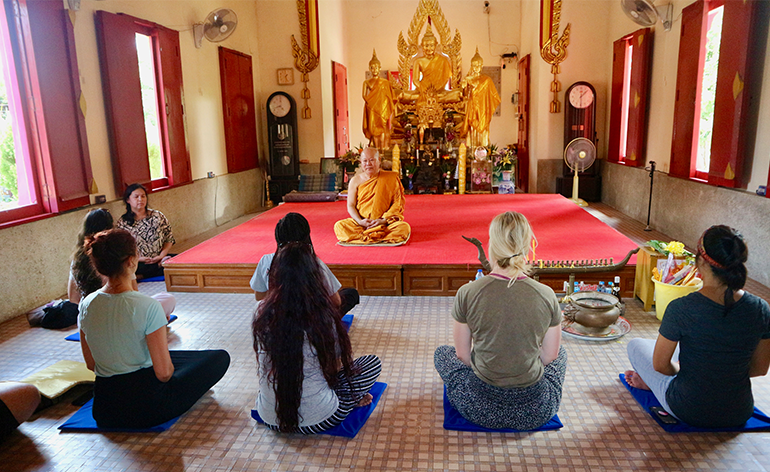Experiencing and participating in cultural traditions are some of the best parts of your Greenheart Travel program. Whether it’s trying on a kimono for a Japanese tea ceremony on a teen summer language camp or drinking mate in Argentina during your Teach English in a Homestay, you’ll learn about your hosts and the country’s culture.
Likely, you’ve heard of the term cultural appropriation. If you haven’t, its most simple definition is, “when somebody adopts aspects of a culture that’s not their own.” A quick Google search will show you this topic is highly debated.
But isn’t the point of going abroad to experience another culture?
Absolutely. But just like in the Greenheart Travel Atlas we urge you to be conscious, respectful travelers, we also urge you to engage in the host country’s culture. In other words, appreciate vs. appropriate.
Sometimes, it’s easy to spot. You (hopefully) cringe when you see people at a music festival wearing Native American headdresses and party-goers donning sombreros and faux mustaches on Cinco de Mayo. In these situations, there’s a clear unbalanced “exchange” happening, by that, there is no exchange. It’s taking another culture’s traditions and removing them from their historical and cultural significance. In those examples, “borrowing” is more like appropriating.
This is especially hurtful in places whose cultures have been ridiculed for centuries. In this article, the authors reference law professor Susan Scafidi’s explanation that “[cultural appropriation is] most likely to be harmful when the source community is a minority group that has been oppressed or exploited in other ways or when the object of appropriation is particularly sensitive, e.g. sacred objects.”
When you’re traveling, it’s a bit complicated.
You may wonder if it’s a bad idea to wear a Sevillana dress at the verbena (festival) in your Spanish town, meditate at a Buddhist temple with your Thai host family or dance Chile and Peru’s cueca when you come back home to the U.S.
In the end, it’s not up to us to give you a list of “do’s” and “don’ts, because as we said, it’s not cut and dry. You must choose for yourself, but two fundamental aspects are respect and context. Ask yourself: Do I understand why this is significant? Am I doing this to honor the culture, rather than imitate it? Am I learning about a culture or perpetuating stereotypes?
Here is an example:
Here is a photo of a traveler wearing a traditional Bedouin scarf while riding a camel in Morocco. Without context, there are clear warning signs. However, at the time, the camel trek guides insisted everyone adopt their attire to protect from the intense Saharan sun and pelting sandstorms. There is a clear invitation.
Now, had this person touted this picture around social media making orientalist jokes, now that would be problematic. So is dressing up as a “Moroccan person” on Halloween.
When it comes to respect, consider your motivations.
Does your desire to wear a Sevillana dress come from a place of curiosity and admiration, or are you doing it for the ‘gram? Do you want to seem unique to friends back home, or are you moved by the historical context the outfit was created in? Have you listened to your family’s abuela tell stories of the verbenas of her youth, or have you laughed at traditional outfits from afar with your other non-Spanish friends? Will you see it as an opportunity to experience, or will you return home claiming you’re the authoritative voice on Spanish traditional dress?
Those are the questions you should be asking.
We want you to embrace the culture during your Greenheart Travel program, but as one article writes the key is “engaging with a culture as a respectful and humble guest, invitation only.”
So dive in – but always with respect, compassion and admiration.




What would cultural appropriation look like when it comes to tattoos?
One i know of is getting the dream catcher tattooed as its part of the native american culture. It really depends on what you make it. Did u get it just for the design? Or did you get it because you respect the culture, you know the true meaning and significance, maybe you even visited a reserve and indulged in the culture directly, vs “i got an Indian tattoo”
Is a black person wearing a lederhosen for halloween cultural appropriation? What about non-irish people dressing up as a stereotypical irish person for saint Patrick’s day? Or is it only cultural appropriation when a white person does it to the majority non white population?